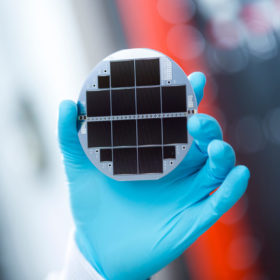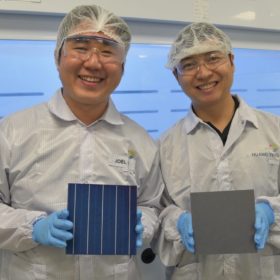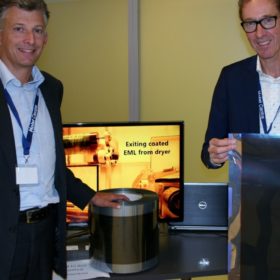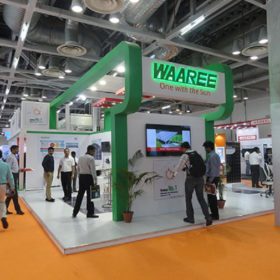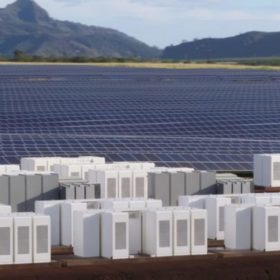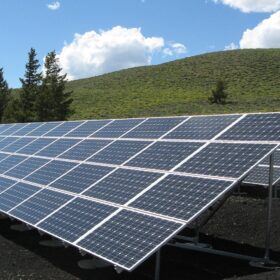Solliance achieves 14.5% cell efficiency on perovskite module
Scientists at European solar research organization, Solliance have announced the achievement of 14.5% conversion efficiency on a perovskite module. The module uses a glass substrate, and the efficiency was measured on an aperture area of 144 cm².
Germany’s Fraunhofer ISE announces 33% efficiency for multi-junction solar cell
Together with Austrian equipment manufacturer EVG, Fraunhofer ISE has achieved an efficiency of 33.3% on a multi-junction solar cell. The highlight of the cell is the ultra-thin II-V semiconductor layer. However, it will be a few years before mass production is possible.
German scientists use germanium to improve performance of kesterite solar cells
Although current efficiencies for solar cells based on kesterite do not exceed 12.6%, the use of germanium may enable the development of cells with a higher energy band gap.
US researchers mull zinc oxide as solar cell manufacturing alternative to titanium dioxide
The group of scientists has identified a new process by which holes get trapped in nanoparticles made of zinc oxide.
Sharp hits 25.09% efficiency on full size HJT cell
Japanese electronics giant Sharp has announced the achievement of 25.09% conversion efficiency, from a cell utilizing both heterojunction and back contact technology. The measurement has been validated by Japan Electrical Safety & Environment Technology Laboratories (JET).
SERIS researchers develop new multi-cSi texturing technique
Scientists from the Solar Energy Research Institute of Singapore (SERIS) have announced the development of a new wet chemical process to allow multi-crystalline Si wafers to be cut with diamond wire saw technology, and subsequently textured to reduce their reflectivity.
A multi-layered battle
Lamination innovation: The ongoing ambition of laminator manufacturers is to develop machines that can deliver high output through a faster lamination process, while simultaneously reducing their footprint by combining several machines into one. However, an in-depth process know-how is essential in order to produce defect-free modules. Which players possess such knowledge?
Fixing perovskite solar cell defects with potassium
Scientists led by Cambridge University have discovered that adding a simple solution of potassium to the ink solution has the effect of ‘healing’ defects in metal-halide perovskite films, and immobilizing ion movement. This, according to the researchers, could push the material to higher efficiencies, while also increasing its stability.
Netherlands Solliance hits 26.3% efficiency on perovskite/silicon tandem
European solar research organization Solliance and the Energy Research Center of the Netherlands (ECN) have announced the achievement of 26.3% efficiency on a transparent perovskite solar cell combined with a crystalline silicon solar cell.
Waaree Energies’ launches Pronto, a do-it-yourself rooftop solar kit
The first of its kind solar kit will make clean energy available across the country. The kit can be installed in 30 minutes and is available in the range of 1-5 KW. Pronto benefits to also extend to small-scale industries. It aims to revolutionize rooftop solar in India.

